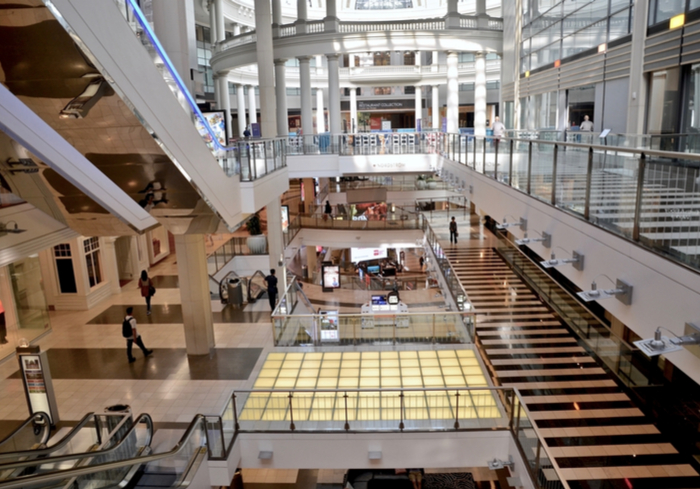
Vacancies in regional shopping malls around the country hit a six-year high during the first three months of 2018, which should stress an already struggling retail sector.
The Wall Street Journal, citing data from Reis, the real estate data company, reported that the vacancy rate at large malls around America hit 8.4 percent in the first quarter, which is up from 8.3% in the fourth quarter of 2017. It is the highest level of vacancies since the fourth quarter of 2012, noted The Wall Street Journal. Neighborhood and community shopping centers in 41 of the 77 metropolitan areas that Reis tracks had an increase in the number of vacancies during the past 12 months as of the end of March.
The vacancies are due in large part to a consumer shift to shop online. Department stores and retailers have been forced to shutter stores or have gone under as a result of the new shopping patterns among American consumers. Reis did note that retailers had 453,000 more square feet of space in shopping centers for the first quarter as compared to the fourth quarter, but it was still the lowest level for any three month period in longer than five years. There was a completion of 712,000 square feet of new shopping center space at the end of the first quarter as well, but Reis said that was a lot lower than the average. “The first quarter tends to see the lowest activity,” the Reis report said, according to the WSJ. “However, this was an unusually slow quarter for retail leasing and construction.”
While the economy in the U.S. is growing, the store closings are hurting smaller cities that have relied on the retail sector to create jobs and bring in tax revenue for the cities. That has prompted lawmakers to get involved in some state governments, creating new laws that force Amazon and other online retailers to collect sales tax on purchases made online so physical stores aren’t at a disadvantage to their online rivals. Meanwhile, President Donald Trump has picked up the attacks on Amazon last week, saying in a tweet: “They pay little or no taxes to state & local governments, use our Postal System as their Delivery Boy (causing tremendous loss to the U.S.), and are putting many thousands of retailers out of business!” Amazon hasn’t commented on the tweet but has noted it collects sales tax on its own inventory of products it sells in 45 states that have the tax.